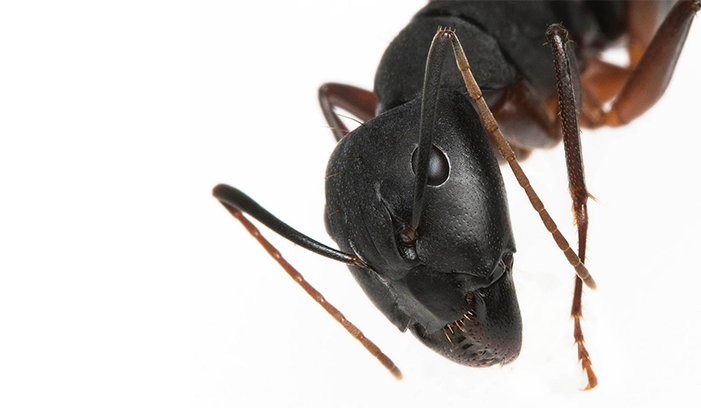
16 Jun Knocking on Wood: Carpenter Ants (Part 1)
Worldwide, there are more species of carpenter ants than any other kind of ant—back in 2000, we knew of over 1,000 species! These creatures are fascinating, but there’s no place for them in your home. We’re doing a two-part blog teaching you more about how these ants operate. Continue reading for Part 1, and click here for Part 2!
Big and Strong
Carpenter ants are among the larger ants you’ll see around your home in Texas. Adult workers are usually between 0.25” and 0.5” long, while queens can grow to a whopping 0.75” long.
These little guys are mighty, too. Ants can carry up to 50 times their body weight, and some can even lift 100 times their body weight! That’s the equivalent of a 175-pound person lifting a school bus with their teeth. Ants are able to do this because of how much muscle they have in their tiny bodies. Their strength-to-weight ratio is much higher than that of a larger creature, like a human. They can also travel great distances when they’re foraging for food—sometimes they’ll use a food source that’s the length of a football field away from their nest!
They withstand colder temperatures because of an “antifreeze” (i.e., glycerol) that their bodies generate. As a result, they can hibernate when the temperature drops in the winter, and then pick right up where they left off as soon as the weather warms up again. If the nest is located in a heated building, they won’t need to hibernate.
What They Do to Your House
Carpenter ants won’t go after the beautiful, healthy, dry wood in your home like termites will; carpenter ants want the rotted, damp stuff to nest in, preferably in places that are already hollowed out. They’re looking for an environment with a consistently humid climate and temperature. When it’s done, their nest will be completely smooth and free of splinters, sawdust, and other debris. That’s how the carpenter ant got its name.
In Texas, they’re more of a nuisance than anything else because they don’t typically cause damage to the framing lumber in your home. But they’re still considered a potential wood-destroying insect.
What most people don’t realize is that these ants don’t eat wood—they’re just expert woodworkers. In fact, they have quite the sweet tooth and their diet mainly consists of protein and sugary foods. They feed on other insects and honeydew (a sweet, sticky substance produced by aphids, which are insects that feed off of plant juices). They’ll also eat food they find in the home that’s sweet or high in protein, like meat, jam, and honey.
Again, click here for Part 2, where we talk more about these ants. If you think you may have a carpenter ant infestation, give Western Exterminating a call today at 817-834-3121 to schedule an appointment with one of our techs.
Sources:
http://www.biokids.umich.edu/critters/Camponotus_pennsylvanicus/
http://www.theincredibleant.com/ant-how/how-much-weight-can-an-ant-lift



